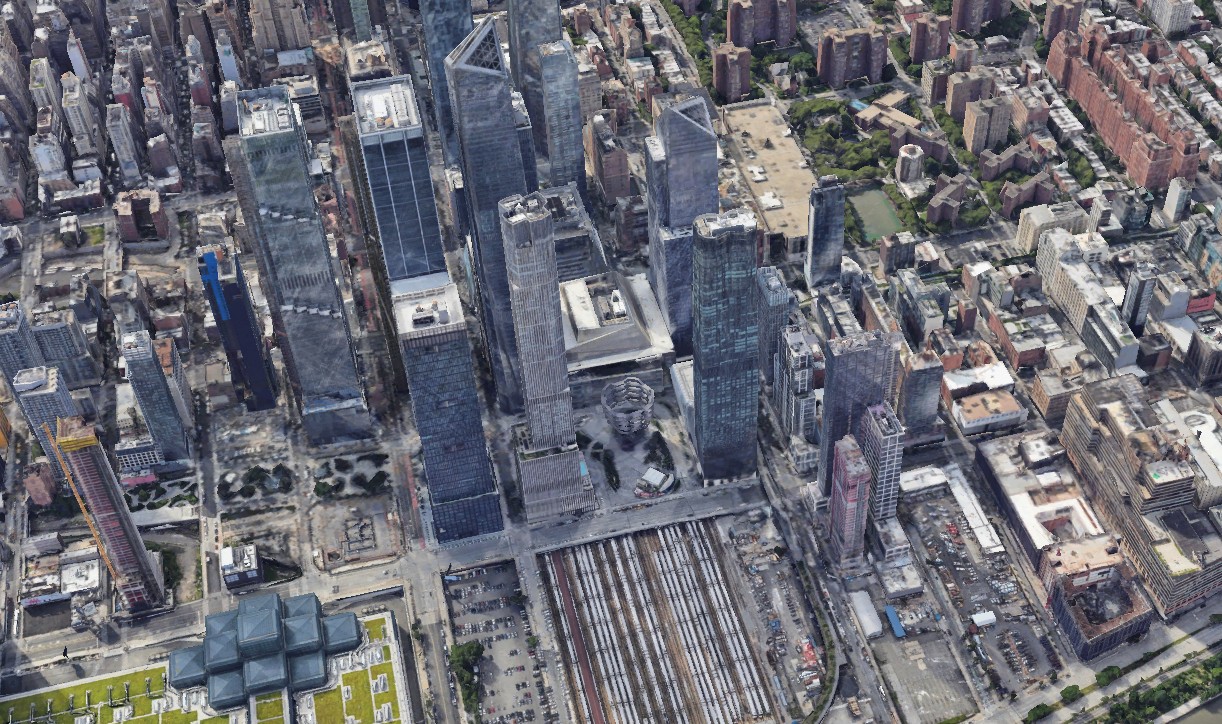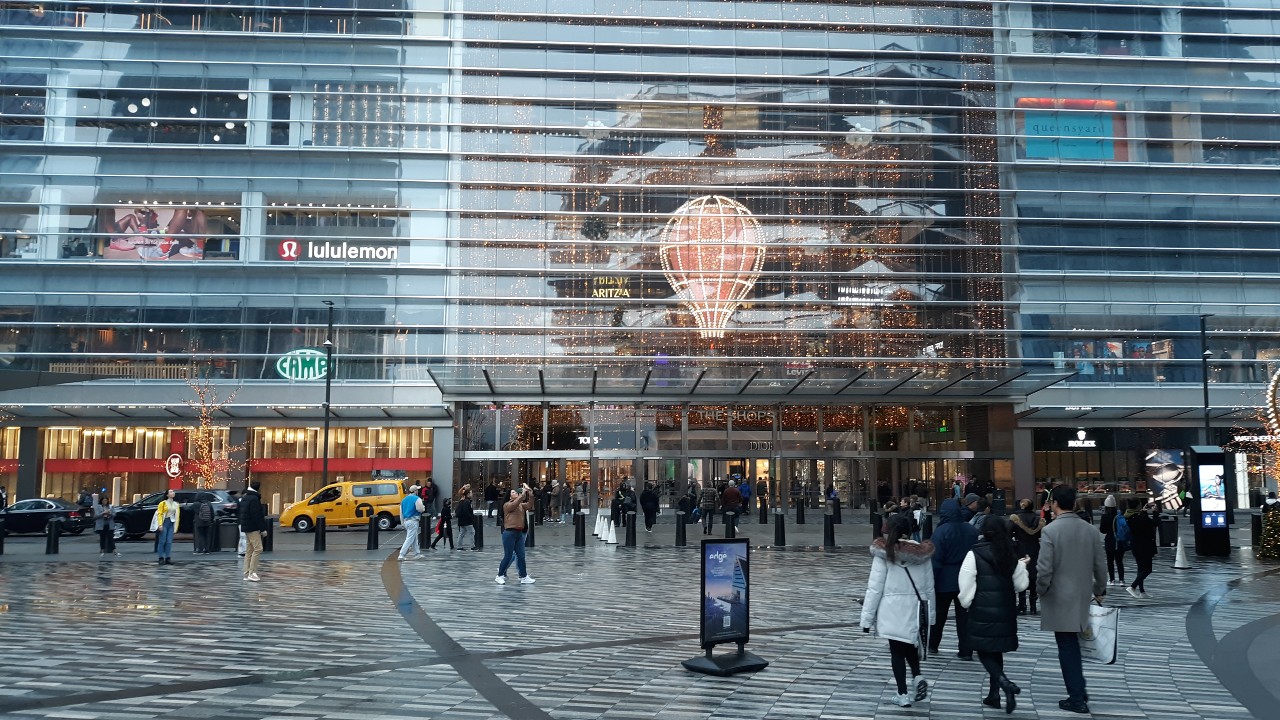The Shed has invited partner organizations to reflect on a question that is central to the play: how is a city built and who is it built for?
Ron Hine | FBW | November 28, 2022
A two-month run of Straight Line Crazy in New York City sold out shortly after tickets went on sale. The sold out performances reflect New Yorkers’ intense interest in Robert Moses, the subject of the play. Moses was a towering figure throughout much of the last century whose public parks, parkways, bridges, expressways and other public projects forever transformed the New York City metropolitan area. Moses’ ability to execute a series of major, complex infrastructure projects is unequaled by any public figure in New York City today.
Straight Line Crazy is a production by the London Theatre Company and is taking place at the Shed, part of a $500 million city-sponsored art complex in the Hudson Yards development on the far West Side of Manhattan. Hudson Yards is billed as the nation’s largest private development and a template for the city of the future. The 28-acre site was created by building a $1 billion platform atop 30 active train tracks and three rail tunnels. Its sleek, super-tall skyscrapers on the completed eastern portion of the site have forever changed Manhattan’s skyline.
In the second act, Jane Jacobs emerges as Robert Moses’ nemesis. Jane Jacobs became a critic of urban planning in the 1950s and 1960s, and an advocate for neighborhoods like her own in Greenwich Village. She successfully fought back Moses’ plan for an expressway that would have cut through her beloved, historic New York City neighborhood.
If Jane Jacobs were alive today, surely she would join the chorus of critics of the Hudson Yards project. The ultra-luxury buildings, designed by big-name architects, are oriented inward toward a commercial plaza, mostly turning their backs on the public streets bordering the project. There is no sense of human scale. Hudson Yards is an exclusive neighborhood for the super-rich. The development sets itself apart from the broader Manhattan community.
In 2019, after the western half of the project opened, the New York Times architecture critic Michael Kimmelman wrote, “It is, at heart, a supersized suburban-style office park, with a shopping mall and a quasi-gated condo community targeted at the 0.1 percent. A relic of dated 2000s thinking, nearly devoid of urban design, it declines to blend into the city grid.”
Straight Line Crazy presents Moses’s storied career in two acts. The first act takes place in the 1920s after Governor Al Smith tapped a young, idealistic Robert Moses to be President of the Long Island State Park Commission and Chairman of the New York State Council of Parks.
In 1929, Robert Moses completed Jones Beach State Park, his first major public works project. The park included 6.5 miles of white sand beach, sumptuous bathhouses and an Italianate-style water tower. Moses ensured that the park was entirely public, free from housing and private clubs. The initial popularity of Jones Beach was compared to the opening of Central Park 71 years earlier.
In 1934 Mayor Fiorello H. La Guardia appointed Robert Moses Commissioner of the New York City Parks Department where he oversaw the expansion, rehabilitation and modernization of the City’s parks. Hundreds of playgrounds were built. Three zoos, 10 golf courses and 53 recreational buildings were completed. Orchard Beach opened in the Bronx, and Jacob Riis Beach opened in Queens. In 1936, eleven enormous outdoor pools opened in neighborhoods all over the city.
For the next three decades, through his various government positions, Moses completed a long string of public projects, including the Wantagh State, Meadowbrook State and Triborough Marine Parkways; the Throgs Neck, Whitestone, Henry Hudson and Verrazano-Narrows Bridges; the Brooklyn-Queens, Staten Island and Cross-Bronx Expressways; plus Flushing Meadows Corona Park, Shea Stadium and Lincoln Center.
Today, the City of New York and most other municipalities play a passive role in the planning process, leaving projects in the hands of private real estate developers to design and plan as they see fit. The City’s involvement in planning Hudson Yards was minimal, leaving the developers, Related Companies and Oxford Properties, essentially a blank slate on which to build their project. The City required 50% of the site to be dedicated to public open space but the developers were allowed to determine the nature of that space.
Alexandra Schwartz’s 2019 article in The New Yorker stated, “As is increasingly common in New York City, Hudson Yards is a private space masquerading as a public one.” The open space will be privately owned and controlled. It will not resemble a public park. The “Public Square” with its monumental sculpture, the Vessel, is more like a commercial plaza leading to the 6-story ultra-luxury shopping mall. The yet to be built western half of the Hudson Yards is designed as a Corbusier-inspired towers-in-the-park superblock whose open space will largely serve the residential skyscrapers, not the public.
The second act depicted a Robert Moses who had fallen out of favor and out of touch. His displacement of lower income residents to build the Cross Bronx Expressway helped spark the opposition in Greenwich Village led by Jane Jacobs. His zealous advocacy for cars at the expense of mass transit has tarnished his reputation and detracted from all the good that he achieved.
In conjunction with Straight Line Crazy, The Shed has invited partner organizations to reflect on a question that is central to the play: how is a city built and who is it built for? The lack of vision and leadership displayed by public officials in our current era does not bode well for the future development of cities and their neighborhoods. Any new plan must begin by mapping the public right-of-ways and public spaces. Private development should take place on clearly defined parcels and zoned in the context of surrounding areas. Cities and communities need to be inclusive, not exclusive. Left to their own devices, private developers will fail to do this.
Related Links
What Hoboken can teach us about the principles of New Urbanism
Liberty Harbor North at Jersey City waterfront based on the tenets of new urbanism
Latest Lincoln Harbor project disregards good planning principles
Lot size matters
The urban design principles that make for successful waterfronts
Master Plans, Official Maps and “Paper Streets”
Architect Craig Whitaker’s reflections on what makes waterfronts successful
Plan for the Hoboken Waterfront




